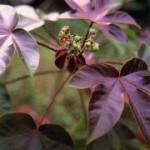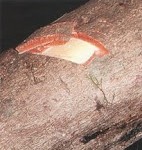Explore Articles Filed Under: Shamanism
It should come as no surprise that the definition of shamanism is profoundly contested terrain. One of the problems has been that definitions of shamanism have been entangled in our own political and cultural concerns. We see in the figure of the shaman what we need to see — cultural resister, compassionate healer, master of ecstasy, psychotherapist, embodiment of indigenous wisdom.
It may be worth drawing a distinction between the source of plant knowledge and the source of plant healing. Many indigenous peoples assert that their knowledge of plants and their uses comes from some other-than-human person who appears in a vision or dream. These spirits may, as in the Amazonian mestizo tradition, be the plants themselves, but not necessarily; when my teacher doña María Tuesta was young, for example, it was the Virgin Mary, not the plant spirits, who appeared in her dreams, showed her the healing plants, and taught her the plants to cure specific diseases.

Among Amazonian mestizos, the term saladera refers to a persistent run of bad luck and misfortune — in family matters, business, and human relationships — often accompanied by great anxiety. This sickness is parallel to the Mexican sacalio, and it is treated the same way: by bathing.

The pucalupuna (Cavanillesia umbellata) is a very powerful plant. It is also called lupuna colorada, red lupuna — the word puca means red in Quechua — and must be distinguished from the white lupuna (Ceiba pentandra), also called lupuna blanca, lupuna, or kapok. The pucalupuna wants to deal only with the strongest and most self-controlled of humans, those willing to undertake a dieta fuerte, a lengthy and rigorous diet in the jungle. Other humans it simply kills.

Isuma Independent Inuit Film — the word isuma means to think in Inuktitut — produced The Fast Runner (Atanarjuat) in 2000. Acted entirely by Inuit people, with dialogue in their native language, the film was a retelling of an ancient Inuit story of jealousy and murder: propelled by a primordial patricide, an evil spirit entered into a tiny Inuit community, manifest as the bitterness, jealousy, and murderous rage of the leader and his son.
Ayahuasquero don Juan Tangoa Paima claims that he can heal cancer, AIDS, epilepsy, heart disease, stomach and intestinal conditions, sexually transmitted diseases, depression, drug addiction, mental disorders, migraines, anxiety, and obesity — indeed, he offers the “complete and total healing of any and all afflictions.” Now, these are staggering claims.
The term monte occurs frequently in Amazonian mestizo shamanism. It generally refers both to mountains and woodlands; in the Amazon, it is, technically, the term used to differentiate the highland jungle from the várzea, the annually flooded lowland forest. But to the mestizos, the term means — as one regional dictionary puts it — despoblado, unpopulated, deserted, and thus dangerous, solitary, and frightening.

In the Amazon, products purporting to enhance male sexual potency are sold in stalls and shops all over the jungle. These drinks are probably as well known for their names as for their ingredients — Rompecalzón, Rip-Your-Shorts; Levántate Lázaro, Arise Lazarus!; Para Para, Stand up! Stand up!; Tumba Hembra, Knock Her Over; Siete Veces Sin Sacar, Seven Times Without Pulling Out; Levántate Pájaro Muerto, Arise Dead Bird!

Ojibwa painter Norval Morrisseau, one of Canada’s most celebrated artists, died at Toronto General Hospital on Tuesday morning, at the age of 75. Morrisseau was the creator and spiritual leader of the Woodland Indian art movement, both in Canada and in the northeast United States, inspiring generations of native artists.

Toé is the name given in the Upper Amazon to various species of Brugmansia, primarily B. suaveolens and a wide variety of cultivars. Poet César Calvo calls toé “that other powerful and disconcerting hallucinogen.” Toé contains the primary tropane alkaloids hyoscyamine, atropine, and scopolamine; it may be mixed into the ayahuasca drink, ingested in the form of raw plant materials, or smoked in a cachimbo pipe. Toé is considered one of the most powerful plants, a strong but dangerous ally.

Discussing the article:
Hallucinogens in Africa